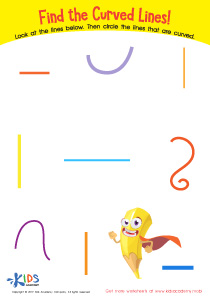Missing Letters Worksheets for Ages 6-9
6 filtered results
-
From - To
Welcome to our engaging "Missing Letters Worksheets" designed specifically for children aged 6-9! These worksheets offer a fun and interactive way for young learners to enhance their alphabet recognition and spelling skills. Each activity encourages students to identify and fill in the missing letters within words, reinforcing their understanding of letter sequences and vocabulary. Perfect for home or classroom use, these resources support essential literacy development while keeping students entertained. With colorful visuals and various difficulty levels, children will build confidence in their reading abilities. Download our worksheets today to make learning letters enjoyable and effective!


Missing Digraph: Part 1 Worksheet


Find The Missing Word Worksheet


Which Letter Should you Choose? Worksheet


Pick the Letter Worksheet


Missing Digraph: Part 2 Worksheet


Missing Letter Worksheet
"Missing Letters" is a crucial educational tool for children aged 6-9 as it supports foundational literacy development. At this age, children are transitioning from learning to read to reading to learn. Engaging in activities that involve identifying and filling in missing letters helps solidify their understanding of phonetics, spelling patterns, and word recognition, which are essential for reading fluency.
For parents and teachers, involving children in exercises like "Missing Letters" can enhance vocabulary skills and promote critical thinking as they contextualize words and learn word structure. This activity encourages active participation, which is vital in maintaining interest and motivation during learning. Additionally, it stimulates interactive learning, fostering a collaborative atmosphere that can enhance social skills through group activities.
Moreover, reinforcing letter recognition aids in developing writing abilities, as children begin to connect sounds with symbols, strengthening their overall literacy foundation. With ongoing literacy skills being directly linked to future academic success, it is imperative that parents and teachers prioritize such engaging learning tools. By focusing on "Missing Letters," adults can help build confidence in young learners, preparing them for more advanced literacy tasks ahead and ensuring they enjoy the journey of reading and writing.
 Assign to My Students
Assign to My Students









